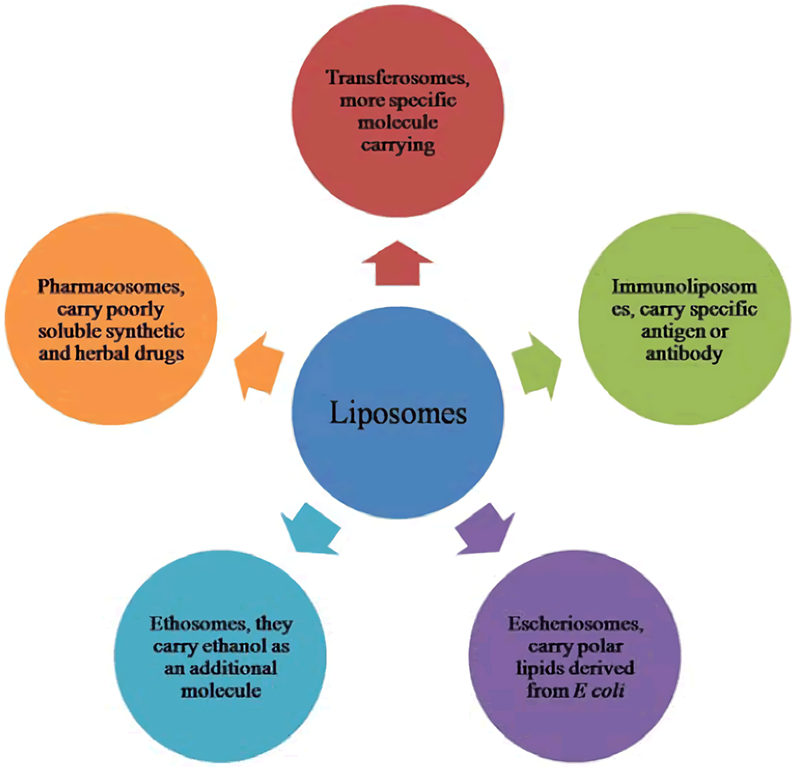Equipped with world-leading liposome development platform and professional scientific staff, Creative Biolabs is always dedicated to assisting our clients with the most satisfactory scientific research services. We are pleased to be your partner specialized in the research field of liposomes and willing to provide the first-class escheriosomes services.
Escheriosomes, also refer to Escherichia coli (E. coli) membrane lipid vesicles, substantially are liposomes belonging to liposomes prepared from polar lipids extracted from E. coli. The lipoidal components of escheriosomes mainly consist of phosphatidyl ethanolamine, cardiolipin, and phosphatidyl glycerol, which are phospholipid classes with fusogenic property present in E. coli. Escheriosomes has been well demonstrated and confirmed to be good immunoadjuvants or adjuvant candidates in vaccine researches and applications.
 Fig.1 Different types of liposomes.1,2
Fig.1 Different types of liposomes.1,2
Escheriosomes are potential adjuvant candidates delivery vehicles largely because it can induce high cytotoxic T lymphocyte (CTL) responses. The fusogenic phospholipids in escheriosomes make it easier to fuse with the plasma membrane of target cells, usually macrophages, which ensures a more effective cytoplasmic delivery of entrapped molecules or antigens. Such form of delivery mostly takes place on the antigen-presenting cells (APCs), of which subsequently the entrapped antigens was processed by APCs via an endocytic pathway and presented by MHC Class I mode. Expression via MHC class I molecules is the pre-requisite for inducing both CD4+ T-helper and CD8+ cytotoxic T cells response against antigens.
As a special liposome, the general mechanisms action of escheriosomes, as well as other types of liposomes, can be summarized as follows:
Escheriosomes are good and promising drug carriers in improving the delivery of pharmaceutical drugs, particularly for vaccine production. Characteristics of escheriosomes delivery system include but not limited to:
Escheriosomes system can be widely applied to the diversity of pharmaceutical drugs delivery, especially for vaccine as adjuvants. As an outstanding biological and pharmaceutical services provider, Creative Biolabs has focused on the development of the drug delivery system researches for many years. Furthermore, we possess a universal and professional vaccine platform. Based on these experience and platforms, we can provide our customers with the best and most extensive drug delivery services. Please directly contact us for more information and detailed quote.
References
 For Research Use Only. Not For Clinical Use
For Research Use Only. Not For Clinical UseSupports
Online Inquiry

